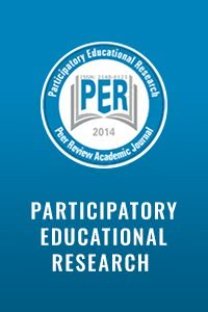Twice A Minority: Education and Life Experiences of War Victim Refugee Youth with Developmental Disabilities and those of Their Parents in Türkiye
Twice A Minority: Education and Life Experiences of War Victim Refugee Youth with Developmental Disabilities and those of Their Parents in Türkiye
intellectual disability, autism, Syrian refugees education, special needs,
___
- Acartürk, C., McGrath, M., Roberts, B., Ilkkursun, Z., Cuijpers, P., Sijbrandij, M., Sondorp, E., Ventevogel, P., McKee, M., & Fuhr, D. C. (2021). Prevalence and predictors of common mental disorders among Syrian refugees in Istanbul, Turkey: A cross-sectional study. Social Psychiatry and Psychiatric Epidemiology, 56(3), 475-484.
- American Association on Intellectual and Developmental disabilities (AAIDD). (2013). “FAQ on the AAIDD definition on intellectual disability”. USA: AAIDD Publication. http://www.aaidd.org/intellectualdisabilitybook/content_7473cfm?navID=366
- American Psychological Association (APA). (2013). Diagnostic and statistical manual of mental disorders (DSM-V). Oxford Handbook Online.
- Arfa, S., Solvang, P. K., Berg, B., & Jahnsen, R. (2020). Disabled and immigrant, a double minority challenge: a qualitative study about the experiences of immigrant parents of children with disabilities navigating health and rehabilitation services in Norway. BMC Health Services Research, 20(1), 1-16.
- Bal, A., Cavkaytar, A., Artar, T. M., & Uluyol, M. (2021). Examining educational life Syrian refugee students. Journal of National Education, 50(1), 195-219.
- Carlier, M., & Roubertoux, P. L. (2014). Genetic and environmental influences on intellectual disability in childhood. In Behavior Genetics of Cognition Across the Lifespan (pp. 69-101). Springer, New York, NY.
- Creswell, J. W. (2007). Qualitative enquiry and research design: Choosing among five approaches. London: Sage Publications.
- Creswell, J. W. (2014). Research design: Qualitative, quantitative, and mixed methods approaches. (4th Edition). Sage Publications.
- Culbertson, S., & Constant, L. (2015). Education of Syrian refugee children: Managing the crisis in Turkey, Lebanon, and Jordan. Rand Corporation.
- Çelik, Ç., & İçduygu, A. (2019). Schools and refugee children: The case of Syrians in Turkey. International Migration, 57(2), 253-267.
- Dew, A., Lenette, C., Smith, L., Boydell, K., Bibby, H., Lappin, J., Coello, M., Raman, S., Velkou, K., Wells, R., Momartin, S., Blunden, H., Higgins, M., Murad, M., Barry, J., & Mohammad, Y. (2021). ‘To the Arabic community disability is not normal’: Multiple stakeholder perceptions of the understandings of disability among Iraqi and Syrian people from refugee backgrounds. Journal of Refugee Studies, 34(3), 2849-2870.
- Erlandson, D. A., Harris, E. L., Skipper, B. L., & Allen, S. D. (1993). Doing naturalistic inquiry: A guide to methods. London: Sage Publication.
- Guba, E. G., & Lincoln, Y. S. (1989). Fourth generation evaluation. London: Sage Publication.
- Krippendorff, K. (2004). Content analysis: An introduction to its methodology. Beverly Hills: Sage Publications.
- Kymlicka, W. (1995). Multicultural citizenship: A liberal theory of minority rights. Clarendon Press.
- Luce, A. (2018). Asylum seekers and refugees with intellectual disabilities in Europe. Samuel Centre for Social Connectedness.
- McCarthy, A. T. (2018). Politics of refugee education: Educational administration of the Syrian refugee crisis in Turkey. Journal of Educational Administration and History, 50(3), 223-238.
- Öner, O., Kahilogullari, A. K., Acarlar, B., Malaj, A., & Alatas, E. (2020). Psychosocial and cultural needs of children with intellectual disability and their families among the Syrian refugee population in Turkey. Journal of Intellectual Disability Research, 64(8), 644-656.
- Patton, M. Q. (2002). Qualitative research and evaluation methods. Thousand Oaks, Calif: Sage Publications.
- Pearce, E. (2015). ‘Ask us what we need’: Operationalizing guidance on disability inclusion in refugee and displaced persons programs. Disability and the Global South, 2(1), 460-478.
- Polack, S., Scherer, N., Yonso, H., Volkan, S., Pivato, I., Shaikhani, A., Boogs, D., Beck, A. H., Atijosan-Ayodele, O., Deniz, G., Örücü, A., Akıncı, İ., Hameed, S., & Patterson, A. (2021). Disability among Syrian refugees living in Sultanbeyli, Istanbul: Results from a population-based survey. Plos One, 16(11), e0259249.
- Rohwerder, B. (2018). Syrian refugee women, girls, and people with disabilities in Turkey. Knowledge, Evidence and Learning Development. K4D Helpdesk Report.
- Rossman, G. B., & Rallis, S. F. (2012). Learning in the field: An introduction to qualitative research. Thousand Oaks, Calif: Sage Publication.
- Sapmaz, Ş. Y., Tanrıverdi, B. U., Öztürk, M., Gözaçanlar, Ö., Ülker, G. Y., & Özkan, Y. (2017). Immigration-related mental health disorders in refugees 5–18 years old living in Turkey. Neuropsychiatric Disease and Treatment, 13, 2813.
- Shacknove, A. E. (1985). Who is a refugee? Ethics, 95(2), 274-284.
- Skinner, M. (2014). The impact of displacement on disabled, injured, and older Syrian refugees. Forced Migration Review, 47, 39.
- Szente, J., Hoot, J., & Taylor, D. (2006). Responding to the special needs of refugee children: Practical ideas for teachers. Early Childhood Education Journal, 34(1), 15-20.
- Tekeli-Yesil, S., Isik, E., Unal, Y., Aljomaa Almossa, F., Konsuk Unlu, H., & Aker, A. T. (2018). Determinants of mental disorders in Syrian refugees in Turkey versus internally displaced persons in Syria. American Journal of Public Health, 108(7), 938-945.
- The UN Refugee Agency (UNHCR). (2022). Statistics of Refugees and Asylum-Seeker. https://www.unhcr.org/tr/
- Williamson, R. L., & Çetin, B. (2019). The participation of refugee children with disabilities in educational options in Turkey: A systematic review. International Journal of Educational and Pedagogical Sciences, 13(6), 899-904.
- ISSN: 2148-6123
- Yayın Aralığı: Yılda 6 Sayı
- Başlangıç: 2014
- Yayıncı: Özgen KORKMAZ
The Use of Virtual Worlds in the Field of Education: A Bibliometric Study
Ali BATTAL, Abdulkadir TAŞDELEN
Abdulkerim AYDIN, Yüksel GÖKTAŞ
The Effects of Teacher Relationships on Student Academic Achievement: A Second Order Meta-Analysis
Havva Nur TOTAN, Agah Tuğrul KORUCU
Educational Technology Research Trends: A 10-Year Content Analysis of PhD Dissertations
Ali GÜNDÜZ, Cengiz GÜNDÜZALP, Ömer KOÇAK, Yüksel GÖKTAŞ
The Use of Concept Cartoons in Overcoming The Misconception in Electricity Concepts
Laı CHIN SIONG, Ong YUNN TYUG, Fatin Aliah PHANG, Jaysuman PUSPPANATHAN
Improving Student Classroom Teachers’ Content Organization Skills Through Practicum
Mükerrem AKBULUT TAŞ, Ayşegül KARABAY
The Effect of Gamified Adaptive Intelligent Tutoring System Artibos on Problem-Solving Skills
İsmail ÇETİN, Ali Kürşat ERÜMİT, Vasif NABİYEV, Hasan KARAL, Temel KÖSA, Mehmet KOKOÇ
Çelebi ULUYOL, Esma ORAK, Şahin GÖKÇEARSLAN, Mehmet RAMAZANOĞLU
